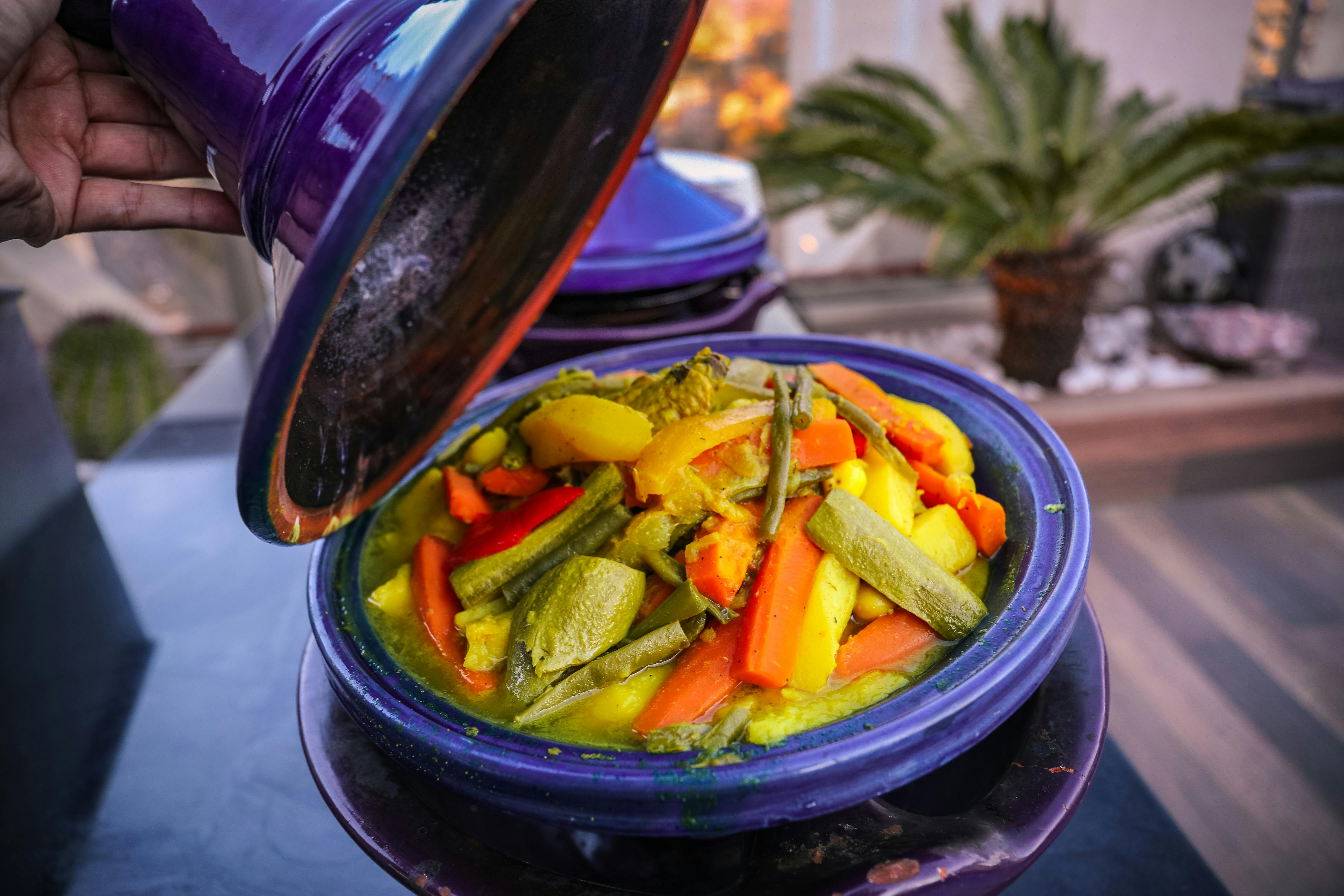Dazzling Delights of Moroccan Cuisine: A Gastronomic Adventure
Feast your senses on the vibrant, aromatic world of Moroccan cuisine. Let's explore the exotic flavors, traditional dishes, and culinary customs that make this North African gem a food lover's paradise. Moroccan cuisine is a confluence of diverse cultures and influences. From the indigenous Berber tribes to the Arab, Andalusian, and French colonists, each has left an indelible mark on the food scene. The result is a rich tapestry of flavors that tantalize the taste buds.

Signature Dishes Worth Sampling
Couscous, tagine, and pastilla are the “holy trinity” of Moroccan cooking. Couscous, a staple grain, is often served with a medley of vegetables and meat. Tagine, named after the conical clay pot it’s cooked in, is a slow-cooked stew brimming with spices. Pastilla, a sweet and savory pie, is a feast of contrasts, often enjoyed during celebrations.
Spice-Forward: The Essence of Moroccan Cooking
Spices are the lifeblood of Moroccan cuisine. Staples include cumin, cinnamon, turmeric, and paprika. However, the star is arguably Ras el Hanout, a complex blend of spices that can contain up to 30 different components. The use of these spices imparts a depth of flavor and a distinctive, unforgettable taste.
Moroccan Mint Tea: A Symbol of Hospitality
No Moroccan meal is complete without a glass of mint tea. This sweet, refreshing beverage plays a central role in Moroccan culture. It’s not just a drink, but a symbol of hospitality and friendship. It’s traditionally served three times to guests, with each round symbolizing life, love, and death.
Moroccan Breads: More Than Just a Side Dish
Bread is an integral part of Moroccan dining. Khobz, a round flatbread, is a daily staple. Other traditional breads include msemen, a flaky square-shaped bread, and baghrir, known as the “hundred hole pancake,” due to its unique texture.
Tips and Facts: Moroccan Cuisine
- Moroccan meals often begin with a series of hot and cold salads followed by a tagine.
- Harira, a hearty soup made with tomatoes, lentils, and chickpeas, is traditionally served to break the fast during Ramadan.
- Preserved lemons are a key ingredient in many Moroccan dishes, adding a unique, tangy twist.
- Morocco is one of the world’s largest exporters of saffron, a spice often used in Moroccan cooking.
- Eating with your hands is common in Morocco. It’s traditional to use bread as a utensil to scoop up food.
In conclusion, Moroccan cuisine is a vibrant, aromatic journey of flavors that is as rich and diverse as the country’s history. Its unique blend of spices, traditional dishes, and culinary customs offer food enthusiasts a gastronomic adventure like no other. So why not embark on your Moroccan culinary journey today? You never know what delicious delights you’ll discover.




